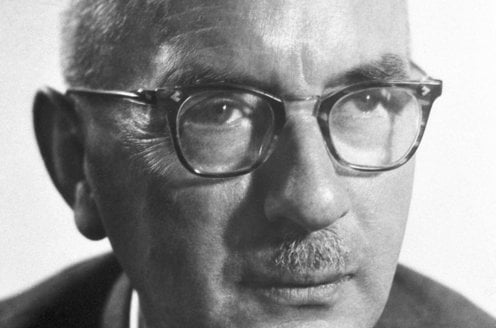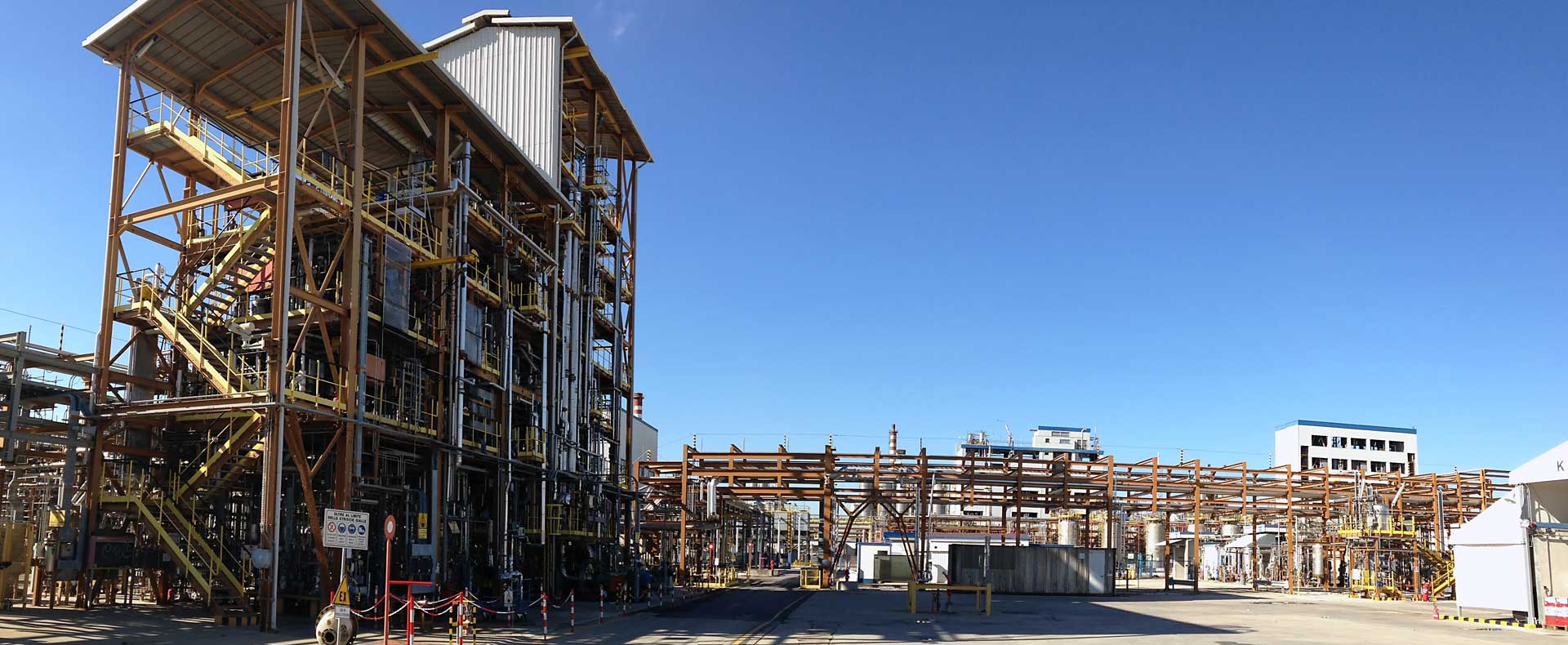Giulio Natta: The Maestro of Macromolecules
Giulio Natta, an illustrious name in the annals of chemistry, stands as a towering figure for his pioneering contributions to polymer science. Born on February 26, 1903, in Imperia, Italy, Natta's work fundamentally altered the landscape of chemical engineering and material science, paving the way for the polymer revolution of the 20th century. His groundbreaking invention, isotactic polypropylene, remains a cornerstone of modern industry and everyday life.
Early Life and Education
Giulio Natta displayed an aptitude for science from a young age, a precocious curiosity that would lead him on a path to academic excellence. Raised in Italy during a period of significant scientific and technological advancement, Natta was influenced by a culture that revered innovation. His formative years were marked by a rigorous education in the physical sciences, laying a solid foundation for his future contributions.
Natta's academic journey commenced at the Polytechnic University of Milan, where he immersed himself in the study of chemical engineering. This institution would not only serve as a training ground but would later become a pivotal venue for his professional endeavors. By 1924, Natta had graduated with laurels, his intellect and determination setting him apart from his peers.
Academic Pursuits and Professional Rise
After earning his degree, Natta embarked on a quest to further refine his expertise, undertaking research and teaching roles that would extend his influence across Europe. His early career was distinguished by a position at the Polytechnic University of Milan, where he served as an assistant professor. This position allowed Natta to delve deeper into the study of catalysis and macromolecular chemistry, areas that would later be integral to his monumental discoveries.
Natta's academic sojourns included time at the University of Rome and the Karlsruhe Institute of Technology in Germany. These experiences, broadened by interactions with luminaries in the field of chemistry, solidified his understanding of chemical reactivity and polymerization processes. It was during this period that his interests coalesced around the use of catalysts to manipulate chemical reactions, laying the groundwork for his later innovations.
Pioneering Work on Polymers
Giulio Natta's most celebrated achievement emerged from his work on polymerization, a process that transforms small molecular units, or monomers, into long molecular chains known as polymers. Although polymers had been the subject of scientific inquiry since the early 20th century, Natta was resolute in his vision to engineer materials with specific, and often superior, properties.
The watershed moment in Natta's career arrived when he collaborated with the German chemist Karl Ziegler. Ziegler had discovered a method to polymerize ethylene using catalysts, which caught Natta's attention. Intrigued by this approach, Natta adapted Ziegler's technology to develop new catalysts, eventually uncovering a method to produce a novel form of polypropylene. His revolutionary work led to the creation of isotactic polypropylene—a material characterized by a consistent and orderly arrangement of its molecular structure.
The Impact of Isotactic Polypropylene
The significance of isotactic polypropylene, first commercialized in the 1950s, cannot be overstated. This polymer, which boasts properties of high tensile strength, durability, and resistance to solvents and oils, opened a new horizon for product development. Its versatility saw it permeate various sectors, from packaging and textiles to automotive components and medical devices. By offering a reliable, cost-effective solution, isotactic polypropylene became ubiquitous in manufacturing.
Natta's discovery revolutionized the plastics industry, earning him a shared Nobel Prize in Chemistry with Karl Ziegler in 1963. The accolade recognized not only the profound scientific achievement but also the transformative impact on global economies and industries. His work democratized the availability of lightweight, durable materials, aiding in the modernization of countless products and technologies.
Legacy and Influence
Giulio Natta's legacy is ensconced in the foundational advancements he made in polymer chemistry and catalyst development. His contributions laid the groundwork for subsequent innovations in materials science, influencing decades of research and industrial applications. As the world continues to grapple with environmental and sustainability challenges, Natta's work remains relevant, prompting new explorations into biodegradable polymers and eco-friendly manufacturing processes.
Natta's intellectual rigor and relentless pursuit of knowledge continue to inspire generations of chemists and engineers. His approach to research, characterized by meticulous experimentation and bold innovation, serves as a template for aspiring scientists. The resonance of his discoveries extends beyond chemistry, illustrating the profound interplay between scientific inquiry and societal advancement.
As the story of Giulio Natta unfolds, it reveals a profound narrative of dedication, ingenuity, and the transformative power of scientific discovery. A venerated figure in the pantheon of great scientists, Natta's indelible impact on the modern world continues to echo through the corridors of research, industry, and innovation.
From Lab to Industry: The Commercialization of Polypropylene
Giulio Natta's groundbreaking work on isotactic polypropylene catalyzed a transformation in the synthetic polymer industry, setting the stage for commercial endeavors that redefined manufacturing capabilities across the globe. The path from laboratory innovation to large-scale industrial production was navigated through strategic collaborations, technological adaptations, and an unwavering commitment to quality.
Initially, the challenge lay in scaling up the laboratory process devised by Natta and his team. The precision required in catalyst preparation and polymerization conditions had to be mirrored on an industrial scale, a task that demanded vigilant engineering solutions. Nevertheless, the potential rewards motivated significant investment in research and development. Companies recognized the market potential of this versatile polymer, prompting a race to refine Natta’s methods for commercial benefit.
Montedison, an Italian chemical company, emerged as a pivotal partner in commercializing Natta's invention. The collaboration culminated in the establishment of one of the first facilities for producing isotactic polypropylene, marking a landmark moment in industrial chemistry. These efforts were not without hurdles, as each stage required rigorous testing and optimization to ensure the material's uniformity and performance met stringent standards.
The Role of Catalysts in Polypropylene Production
Central to the production of isotactic polypropylene was the novel use of Ziegler-Natta catalysts, which combined organometallic compounds with transition metals to facilitate the polymerization of propylene monomers. This pioneering method yielded polymers with regular molecular configurations, distinguishing them from the previously amorphous structures characteristically seen in earlier synthetic polymers.
The catalyst's ability to control stereospecificity in polymer chains was a revolutionary breakthrough. It allowed the resulting polypropylene to exhibit superior features, such as higher melting points and enhanced mechanical properties, compared to its predecessors. The reliability of Ziegler-Natta catalysts facilitated widespread application in producing materials with predictable and desirable attributes.
Applications and Advancements
The commercialization of isotactic polypropylene ignited a wave of innovation across multiple industries. Manufacturers and product developers were quick to exploit the polymer's unique properties, benefiting from its blend of strength, lightweight nature, and chemical resistance. Though the initial focus was on industrial uses such as piping and containers, the versatility of polypropylene saw it penetrate diverse markets, supporting myriad applications:
1. **Automotive Industry* The automotive sector benefitted enormously from isotactic polypropylene, utilizing the material in the production of interior and exterior components. Its light weight contributes to improved fuel efficiency, while its durability ensures longevity in harsh environments.
2. **Textiles and Nonwovens* Polypropylene's low moisture absorption and resistance to staining made it ideal for carpets, ropes, and outdoor fabrics. Additionally, the material found a niche in nonwoven textiles used for hygiene products and filtration media.
3. **Medical Equipment* Its chemical inertness and ability to withstand sterilization techniques positioned isotactic polypropylene as an integral component in the fabrication of medical devices and laboratory equipment.
4. **Packaging and Storage* The polymer's toughness and clarity facilitated its dominance in food packaging, helping preserve freshness while enhancing consumer appeal.
As the material gained popularity, ongoing research led to further enhancements and derivatives of polypropylene, which expanded its range of applications. These advancements sustained its relevance in an evolving manufacturing landscape, where innovation drives competitiveness.
Environmental Considerations and Challenges
Despite its numerous benefits, the widespread use of polypropylene has not been without environmental concerns. As a non-biodegradable material, polypropylene contributes to plastic pollution—a significant global issue. The durability that makes it desirable for industrial use also means it persists in the environment over long periods if not properly managed.
Addressing these challenges has become a focal point for researchers and policymakers alike. Efforts are underway to develop recycling methods that are both efficient and economically viable. Innovations in chemical recycling and the creation of biodegradable polymers represent promising steps towards mitigating environmental impact. Additionally, scientists explore ways to engineer polypropylene with degradable additives, though achieving this without compromising the material's desirable properties remains a complex endeavor.
Giulio Natta's Enduring Influence
The legacy of Giulio Natta continues to resonate, underscored by his profound influence on both the scientific community and broader society. His work not only revolutionized the polymer industry but also set a precedent for how scientific research can drive substantial economic and technological progress. As industries pivot towards sustainable practices, inspired by environmental challenges, Natta's contributions offer invaluable insights into the interplay between innovation and responsibility.
Natta's intellectual legacy is evident in the ongoing pursuit of advanced materials that balance performance with environmental stewardship. His methodologies inspire contemporary research, where the spirit of exploration and precision remains crucial in addressing modern challenges. Moreover, the ethos of collaboration that characterized Natta's career serves as a model for scientists, illustrating the potential for robust partnerships to orchestrate breakthroughs that transcend individual capabilities.
Through his enduring contributions, Giulio Natta remains a beacon for the scientific discipline, inspiring future generations of chemists and engineers to strive for discovery with purpose and integrity. As the world continues to grapple with the intricacies of material science and environmental sustainability, the echoes of Natta’s ingenuity provide guidance and inspiration, fostering a legacy of progress interwoven with mindful stewardship.
Research Developments Beyond Polypropylene
While Giulio Natta is principally celebrated for his work on isotactic polypropylene, his extensive research portfolio extends beyond this singular achievement, reflecting his expertise and pioneering approach to chemical engineering. Natta's inquiry into polymer science laid a groundwork that not only produced seminal breakthroughs in his day but also foreshadowed many of the developments realized by subsequent generations of scientists.
One of Natta's significant research interests included stereoregular polymers, a field that addresses the spatial arrangement of atoms in polymer chains. This aspect of polymer chemistry deals with how the structural arrangement impacts the physical properties of the resulting material. Beyond polypropylene, Natta explored various monomers and catalysts to synthesize novel polymers, positioning these experiments as foundational studies for the development of advanced materials.
His work reflects a continuous quest to extend the capabilities and applications of polymerization processes, focusing on creating materials that could effectively serve emerging industrial needs. Natta’s research elucidated how the configuration of a polymer could be meticulously controlled, leading to a vast array of material properties that could be fine-tuned for specific applications.
Exploration of Synthetic Routes and Industrial Applications
Natta's foray into different synthetic routes signifies his role as a visionary, understanding that the future of chemistry lay not in a single invention but in a plethora of processes, each tailored to its precise application. He did not merely stop at discovering isotactic polypropylene; he pursued deeper understanding and further innovation across the board.
His investigations into other polymers, including synthetic rubber and various fibrous materials, emphasized his dedication to ensuring the resilience and adaptability of materials used in technology and construction. By experimenting with different polymerization techniques, Natta sought to expand the utility of polymers, seamlessly integrating them into manifold sectors from aerospace to consumer goods.
These efforts anticipated the later proliferation of composite materials and advanced alloys, where hybrid approaches to material synthesis empower characteristics like strength-to-weight ratio, thermal stability, and impact resistance—properties crucial in high-performance settings.
The Nobel Legacy and Academic Contributions
Beyond his technical contributions, Giulio Natta's academic and philosophical influences resonate throughout the scientific community. Awarded the Nobel Prize in Chemistry in 1963, alongside Karl Ziegler, for their work on high polymers, Natta’s recognition underscored the importance of foundational research for technological advancement. The prize highlighted the international appreciation of his work and solidified his stature as a monumental figure in the field of chemistry.
Beyond accolades, Natta's legacy thrives in the academic rigor and educational prowess he imparted to both his students and colleagues. His tenure as a professor allowed him to mentor and nurture budding scientists, instilling in them not only the knowledge of synthetic chemistry but also the spirit of inquiry and perseverance. He wielded an educational ethos centered on curiosity-driven exploration, positioning mistakes as stepping stones to breakthroughs—a philosophy that inspires pedagogical practices today.
Continued Influence and Modern-Day Relevance
The work of Giulio Natta remains a foundational pillar on which contemporary polymer research builds. His methodologies and insights continue to inform current innovations, from the engineering of nano-materials to the development of biopolymers. Modern research often revisits Natta's principles, leveraging advances in computational modeling and experimental techniques to gain a deeper understanding of polymer dynamics in various environments.
The modern-day challenge of material sustainability forges a connection with Natta’s work. Industries and researchers are channeling his pioneering spirit to develop eco-friendly polymers and improve recycling methodologies, seeking materials that maintain performance while mitigating environmental impacts. As such, Natta's legacy embodies a continuum, underscoring the profound responsibility of chemistry to address global challenges.
Natta's influence is also palpable in interdisciplinary fields where chemistry converges with biology, materials science, and environmental studies to craft solutions tailored to the complexities of contemporary issues like climate change and resource scarcity. Here, the integration of Natta's findings with cutting-edge science promotes innovations such as lightweight automotive composites and sustainable packaging solutions, directly benefiting societal efforts to conserve energy and reduce waste.
Conclusion: The Everlasting Quest for Innovation
Giulio Natta's life and work encapsulate the relentless pursuit of innovation, a pursuit powered by an insatiable curiosity and a profound understanding of chemistry's potential to transform the world. His contributions extend well beyond any singular discovery, embedding themselves into the fabric of modern material sciences and industries.
As we navigate an era marked by rapid technological advancement and environmental urgency, Natta's legacy provides a beacon for thoughtful innovation—a reminder of the delicate balance between scientific progress and ethical responsibility. His legacy encourages scientists and engineers to forge ahead with creativity and diligence, revitalizing his dream of sculpting the future through science.
Giulio Natta remains a quintessential figure whose insights and discoveries continue to echo through time, guiding contemporary research and industrial strategy toward a harmonious blend of progress and sustainability. His work transcends the pages of scientific history, serving as an enduring testament to the transformative power of human ingenuity.








Comments